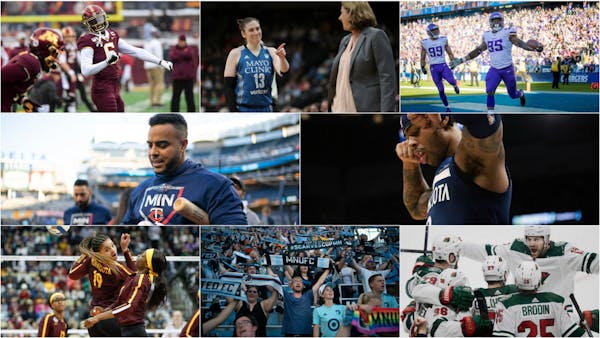The NCAA's new COVID-19 testing recommendations released this week have seriously derailed lower-division sports' hope for fall competition, coaches and athletic directors from Minnesota colleges said Friday.
"Although I think the NCAA puts together plans that are in the best interest of our students and their health and well-being," Macalester AD Donnie Brooks said, "I immediately thought that this is going to price non-Power Five schools out of fall sports."
Per the NCAA's guidelines, which aren't requirements, student-athletes in high-contact risk sports such as football, soccer and volleyball will need COVID-19 testing within 72 hours of every game. The cost of that, as St. John's football coach Gary Fasching put it, is "astronomical."
"It's incredible costs that I don't know that we could absorb at this time," Fasching said.
Across the NCAA, several conferences, including the Division I Ivy League and Patriot League, have already canceled fall sports. In Minnesota, D-III Carleton College has canceled fall sports, but the rest of the MIAC has yet to do more than cancel nonconference games for the fall.
The cost of testing could become a tipping point. Brooks estimated for just his D-III fall sports high-risk teams — men's and women's soccer, football and volleyball — testing would cost more than $300,000.
D-II Minnesota State Mankato AD Kevin Buisman said that under the NCAA guidelines, his department would require 7,750 tests throughout the school year. For just the football team, with 96 players and 23 coaches and staff members, with tests costing about $100 apiece, testing through the season would cost $202,300.
"That's not Mankato's plan; that's what this [NCAA] document is saying you should do," Buisman said. "And again the operative word is 'should.' They're not saying required, they're saying based on the NCAA's medical team, this is what we should do."
At St. John's, Fasching expects what could be his biggest-ever roster of 220 players arriving on campus Aug. 22. Testing for each of the seven remaining games on the D-III Johnnies' schedule could cost $154,000.
Steve Laqua, D-II Minnesota State Moorhead football coach, will have about 121 players this season with 10 games on the schedule, which could total $121,000 for tests.
Upon student-athletes' return to campus this summer, the Gophers, a D-I program, administered two COVID-19 tests and one antibody test to each student-athlete. That cost, per an athletics department spokesman, is $258 per package.
The Gophers conduct their testing at the M Health Clinics and Surgery Center, an on-campus clinic that's part of the university's medical system, running all tests through campus labs. But lower-division universities don't often have on-campus hospitals to partner with for testing.
"Are we going to be able to get testing kits on our campus to do or are we going to send them to a clinic every week? And how's that going to work?" Laqua said. "And how are we going to get the tests back in time for a game?
"The stress level kind of raised on just the practicality of, how are we going to make that happen? And can we make that happen?"
Fasching also had trepidations about whether 72 hours would be enough time to see test results at St. John's, when he's heard of it taking five to seven days.
"It doesn't seem like it'd be possible," he said.
At MSU Moorhead, Laqua has already started game-planning some ways to potentially save on testing costs without swerving safety. He's looking at reducing his travel roster and thus the number of tests.
He's thinking of separating his coaches who work from the press box on game days from the players, maybe making them travel separately so they might not require testing. The injured senior player who would usually watch from the sideline might not make the trip anymore.
Brooks said the lower-division programs want to comply with the NCAA suggestions, but it will be tough financially to conduct weekly tests. He called it "a blow" to D-III schools across the country. But the social implications might weigh even more heavily than the dollars.
"A lot of schools can ask ourselves, 'Is it responsible of us to be using the test when there's so many others in need of this testing as well?' " Brooks said. " … Do [testing facilities] have the capacity?"
For now, these coaches and athletic directors are still planning on having a fall season until their conferences or the NCAA tell them otherwise.
For Brooks, though, these testing outlines basically already did that.
"If the NCAA, similar to what they did in the spring, doesn't pull the plug on fall sports," Brooks said, "this recommendation may have pulled the plug on fall sports for them."
Staff writer Marcus Fuller contributed to this report.


